Volkswagen ID.4 GTX review
Volkswagen is one of the largest automotive manufacturers, with some of its models like the Beetle, Golf or the Transporter minivan getting cult followings. Many people follow the brand almost religiously and therefore every new model that comes from Wolfsburg is met with a lot of excitement. On the flip side, every new model is a challenge and has to be refined in the best possible way, so that the reputation of the “people’s car” can be preserved.
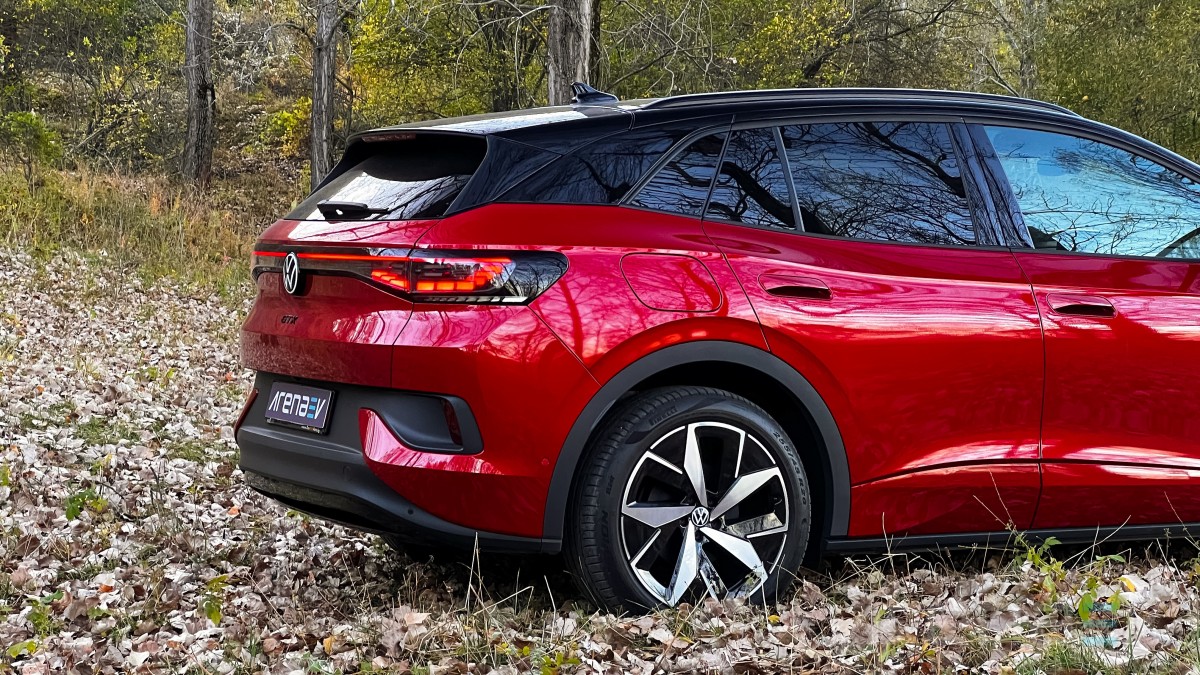
Table of Contents:
- Exterior
- Interior
- Storage & practicalities
- Driving experience
- Tech features
- Ride comfort
- Cabin noise
- Acceleration and braking
- Consumption
- Charging speed
- Competition
- Verdict
Today we are testing one of Volkswagen's newest additions - the ID.4 GTX. It is an electric crossover on the MEB platform, which many vehicles from the Volkswagen group (VAG) use. The GTX is the sportiest and most powerful variant, which comes with 250 kW (340 hp) and standard all-wheel drive. This should combine for a fun, yet practical vehicle with funky styling and big cabin space, all in a compact package of less than 15.09 ft in length.
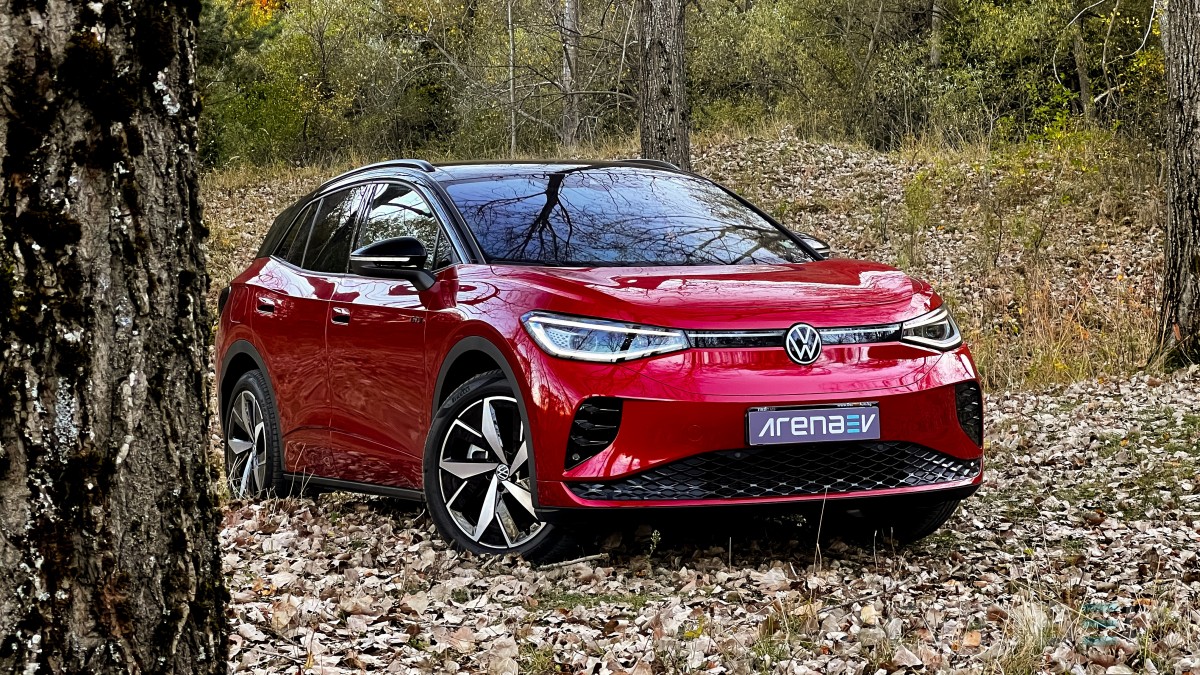
It should be noted that the ID.4 is due a facelift for the 2024 model year. Our test car is actually a hybrid between the two generations and has the facelift drivetrain and look from the outside, but the pre-facelift infotainment.
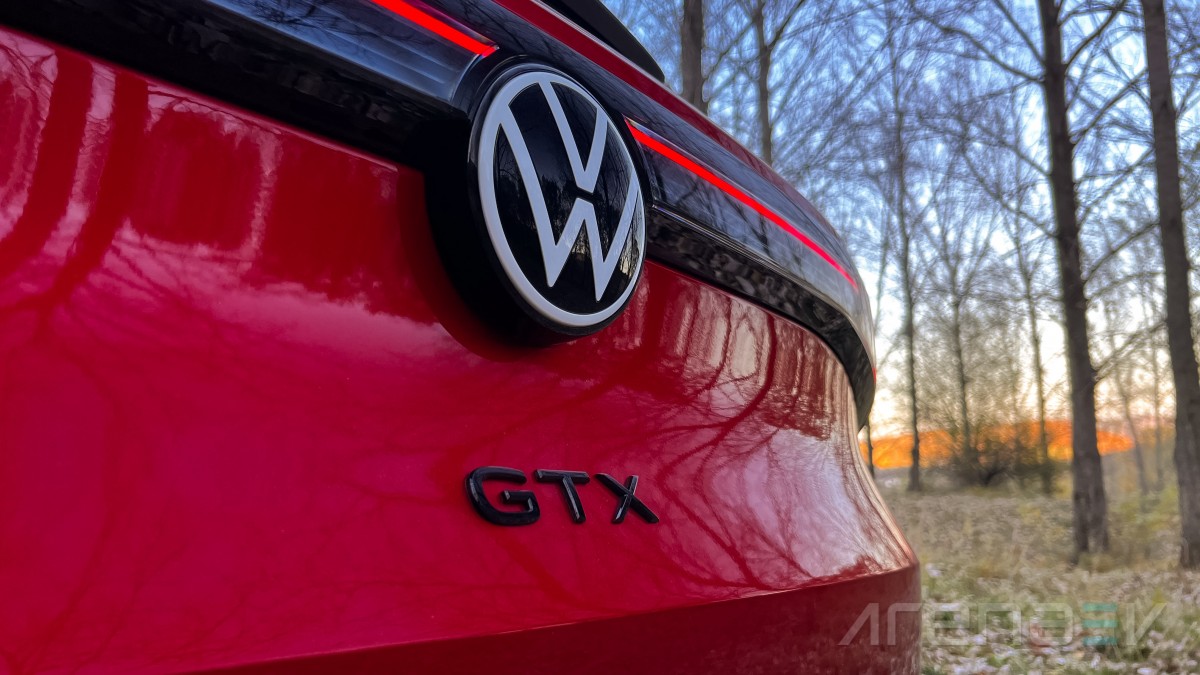
In a world dominated by crossovers, we will show you how the ID.4 GTX stacks up against the ruthless competition. Could it be the next Golf and amass the same success? We are setting off to see how the ID.4 GTX performs in our test and tell you everything you need to know about the model.
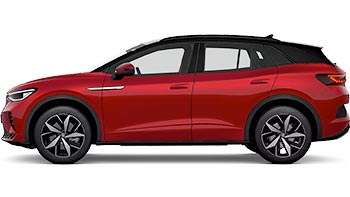
Volkswagen ID.4 GTX 2020 - 2023
- Dimensions: 180.5 inches x 72.9 inches x 64.6 inches, 109.1 inches wheelbase.
- Drivetrain tested: GTX - AWD 250 kW (340 hp), 501 lb-ft, 77 kWh usable battery capacity; 82 kWh total battery capacity.
- Other drivetrains: Pro - RWD, 210 kW (286 hp), 402 lb-ft, 77 kWh usable battery capacity; 82 kWh total battery capacity.
- Charging: 175 kW CCS; 5-80% in 38 min.
- Range: 320 miles WLTP
- Weight: 4,974 lb unladen; 6,107 lb gross
- Other features: Sports seats, Automatic high beams, OTA updates, Augmented reality head-up.
Exterior
The outside of the ID.4 is modern-looking with flowing lines and almost no edges. Everything in the exterior is smoothed out both for style and aerodynamic purposes. Volkswagen made the ID.4 look more like a hatchback than the crossover it actually is with its body-colored lower trims, which most models overlay with black plastic for a more rugged look.
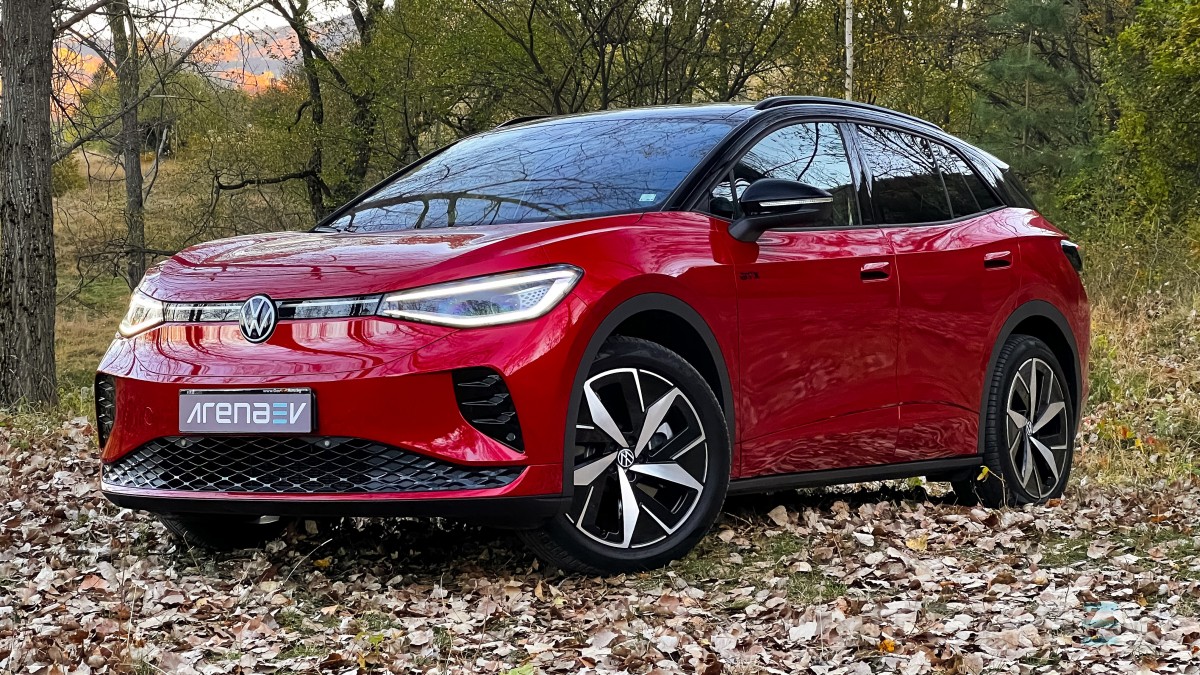
From the front the ID.4 welcomes you with a rounded shape and a “grumpy” look that we really like. It looks aggressive and stately, without being too much in-your-face type of design. The hood is low and has two big bulges on each side that enhance the presence on the road.
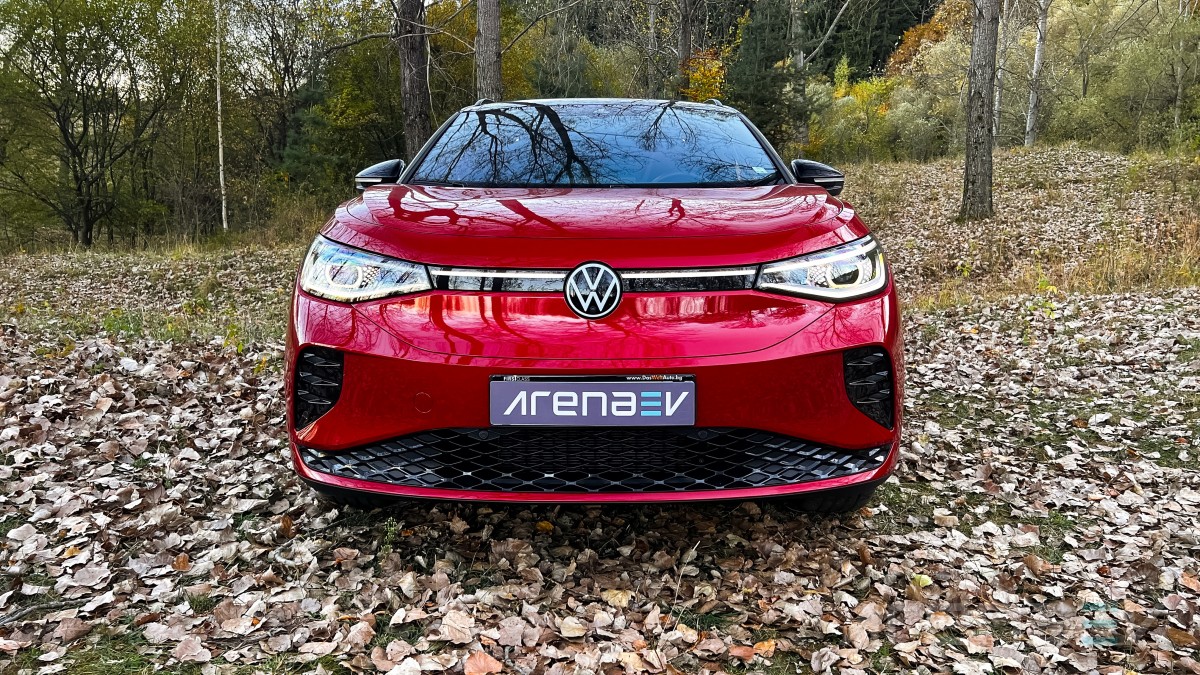
The Volkswagen logo sits high off the ground and is surrounded by LED strips on both sides for a more menacing profile at night, but we feel it gives off a cheap aftermarket look, rather than the futuristic aggressive one VW was going for.
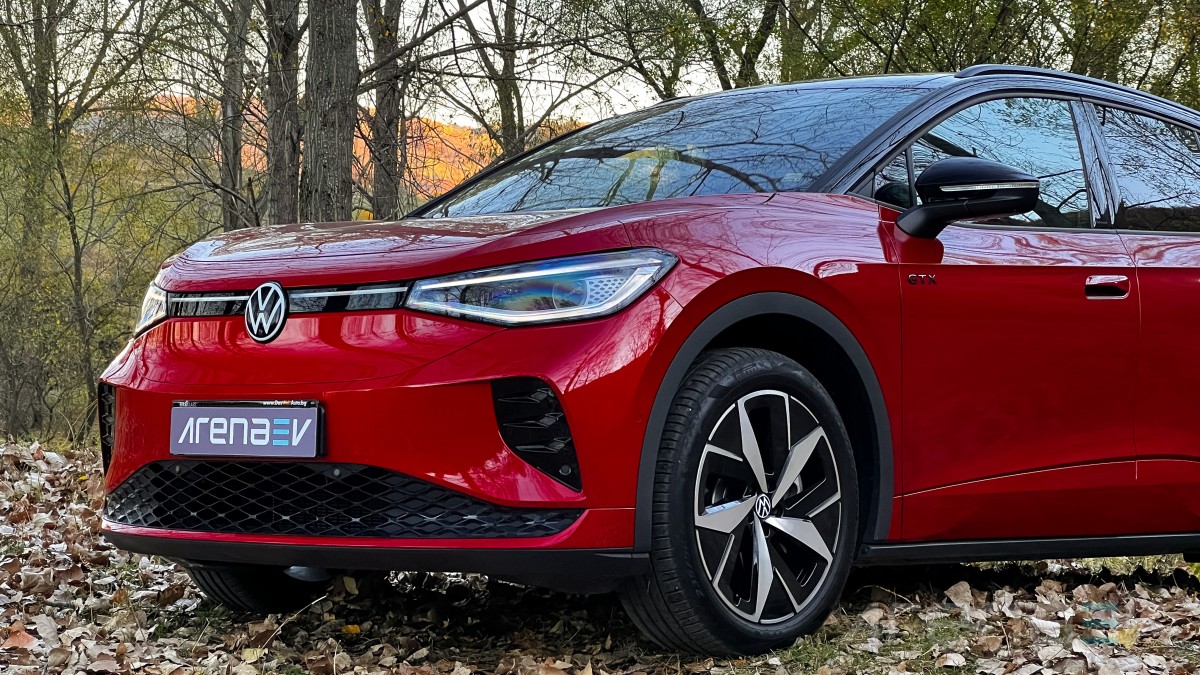
Looking at the ID.4 GTX from the side, it can be easily mistaken for a hatchback. It doesn’t have black plastics on the lower side of the car, as opposed to the regular ID.4 models. This way it has a cleaner look and it helps distinguish it from its tamer siblings.
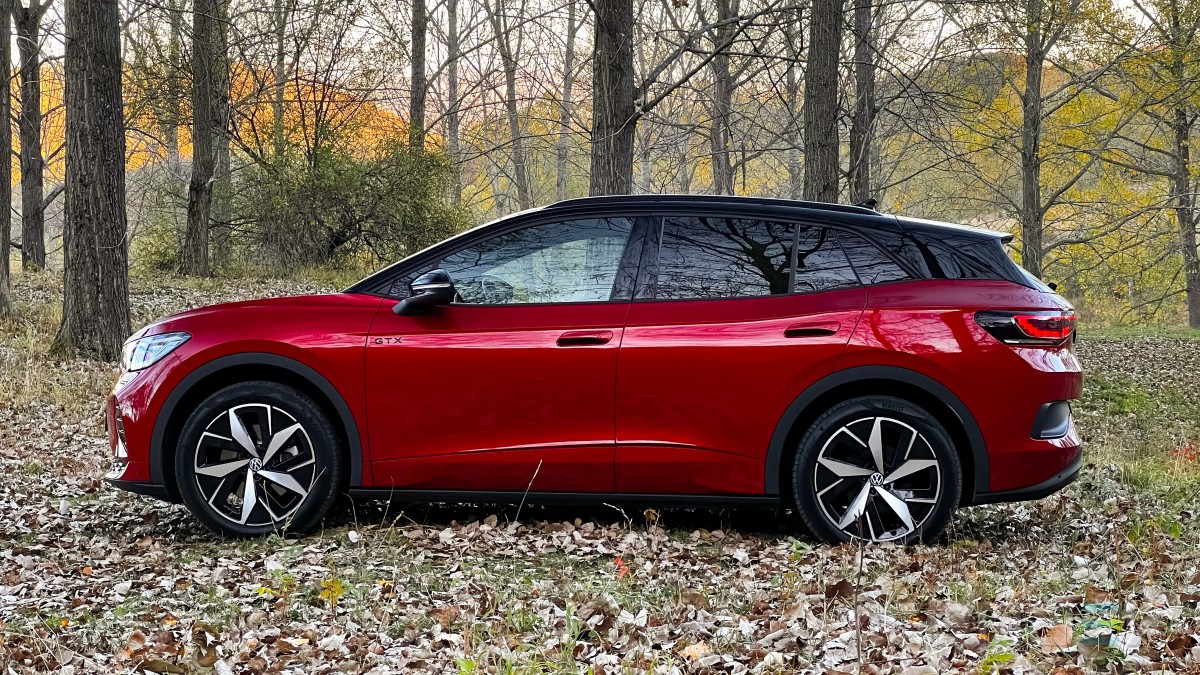
The wheels on our test vehicle are the standard 20-inch alloys, but you can also opt for bigger 21-inch ones. They both look great, but the smaller set offers slightly higher range and a better ride quality. Our vehicle had a staggered setup of Pirelli Scorpion ELECT 235/45/20 in the front and 255/45/20 in the back. These tyres are optimized for better range in EVs, rather than absolute grip.
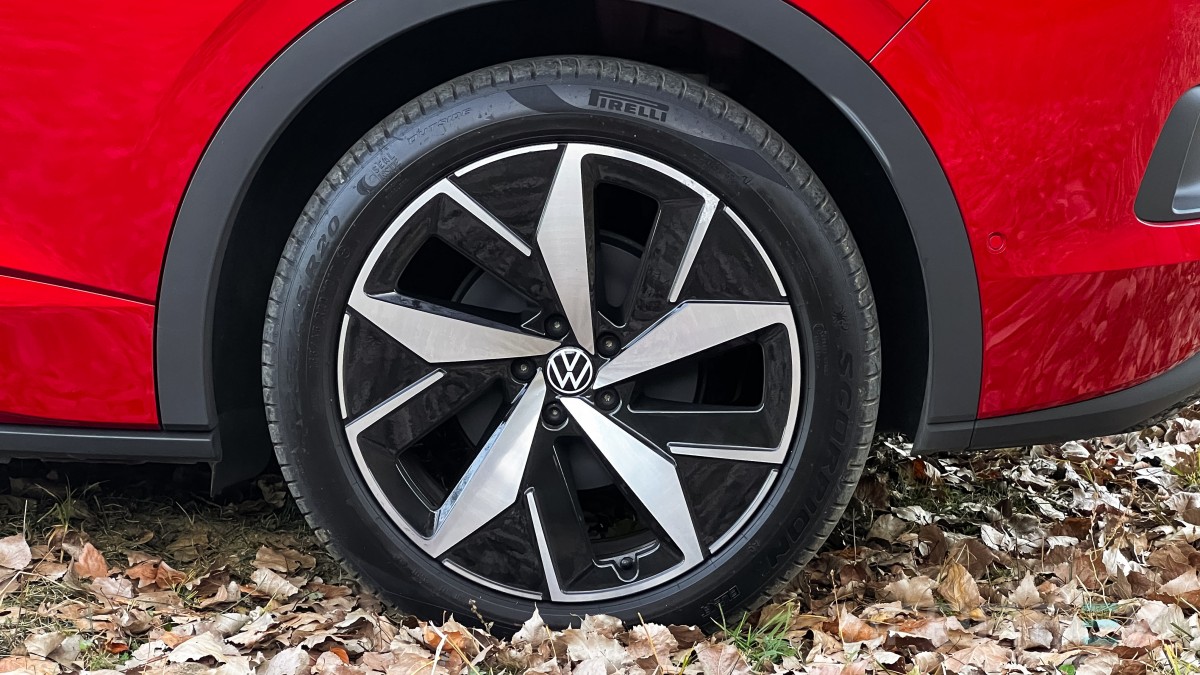
The silhouette of the ID.4 creates an illusion that the roof is “floating” as it's painted black, together with the side pillars. This makes the ID.4 GTX appear lower and slanted, which is actually not the case as the car is 64.6 inches tall and has a ground clearance of 6.7 inches. The regular ID.4 and its 8.3 inches clerance offers even better fit for those that want to tackle more challenging surfaces.

Volkswagen has hopped on the current industry trend of flushed door handles and has aced it in terms of design and practicality. There is a slight opening in the door where you stick your fingers to push a button and open. This way the design remains modern and sleek, but there is no need to wait for electric motors to pop the handle out and having to deal with them freezing in the winter.
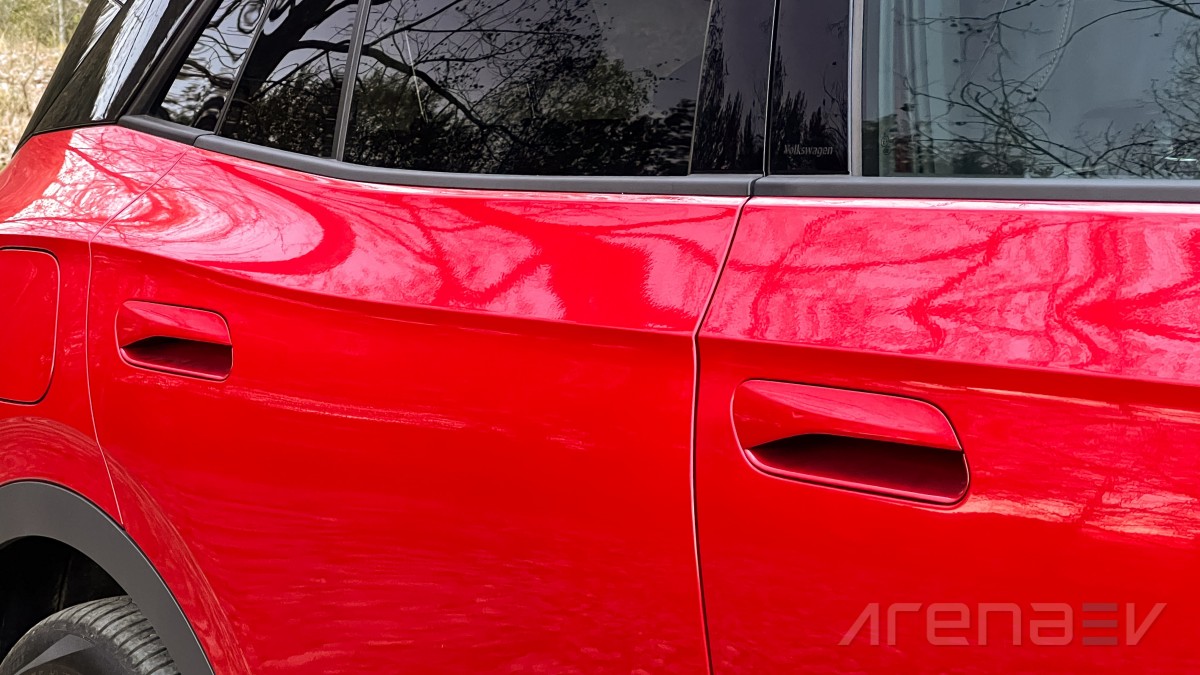
Most modern cars have a graphic, or at least a light to illuminate the vicinity of the vehicle when you unlock it so that you better see what you’re stepping on. Volkswagen has decided to integrate a weird angular graphic, that looks like a Renault logo, which you see everytime you approach your vehicle at night.
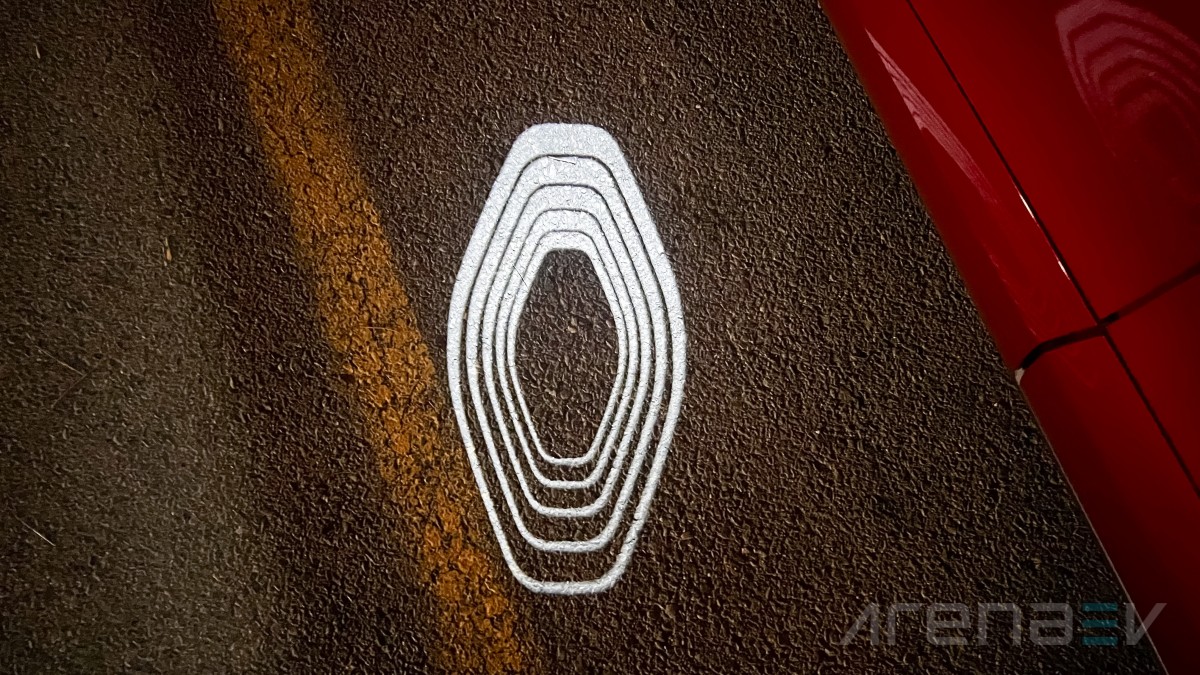
The nameplate “GTX” can be found on the front end of the front doors in a minimalistic script. In the pre-facelift version, every ID.4 has a chrome badge to signify its trim level, whereas now only the GTX comes with model designation on the side.
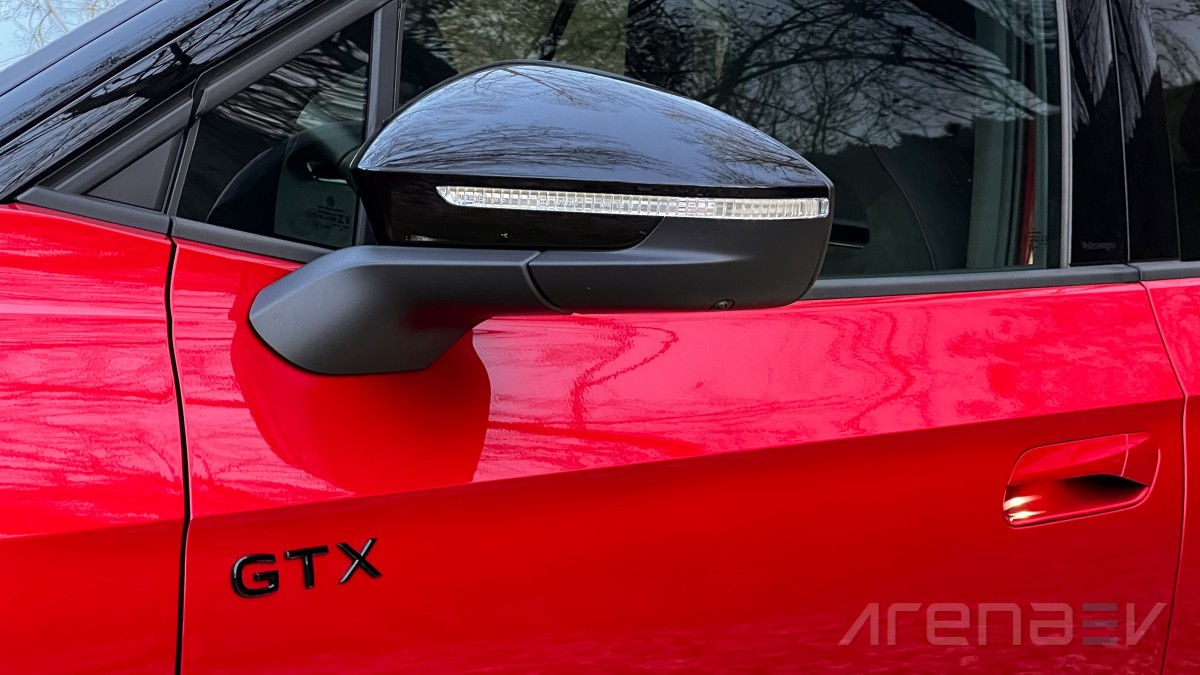
Stepping back and looking at the rear of the ID.4 GTX we see a giant LED bar spreading from end to end, containing the rear and brake lights. Having a cool pixelated design helps distinguish them from all the other vehicles with a rear LED bar that came out recently.
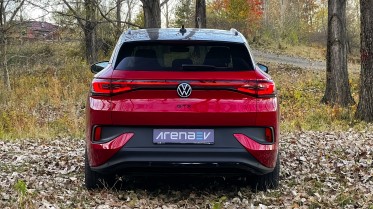
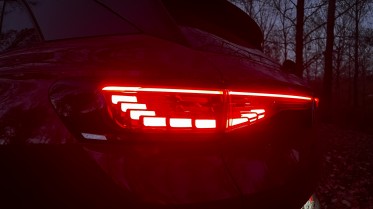
The taillights in the ID.4 GTX are truly distinctive!
The VW emblem sits in the center of the hatch, accompanied by a GTX signature right below it to let everyone know you have the most potent version in existance.
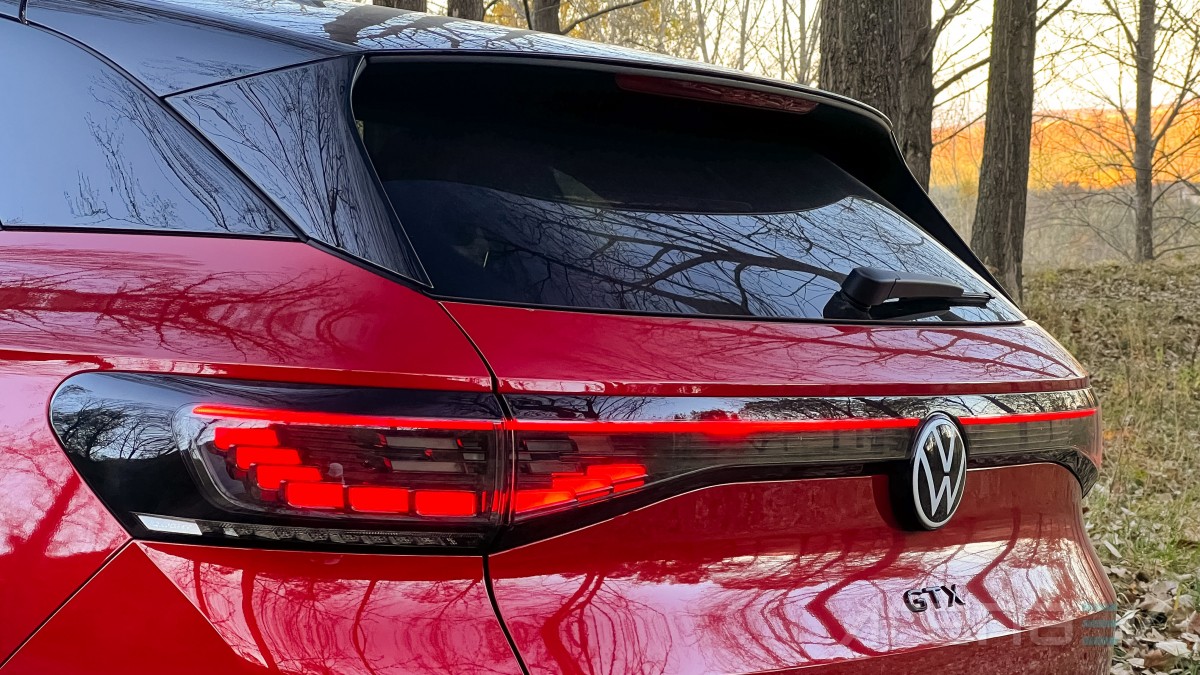
The lower part of the rear is cluttered with black plastic that mimics vents and a diffuser, but all it does is disturb the otherwise very clean exterior of the ID.4 GTX.
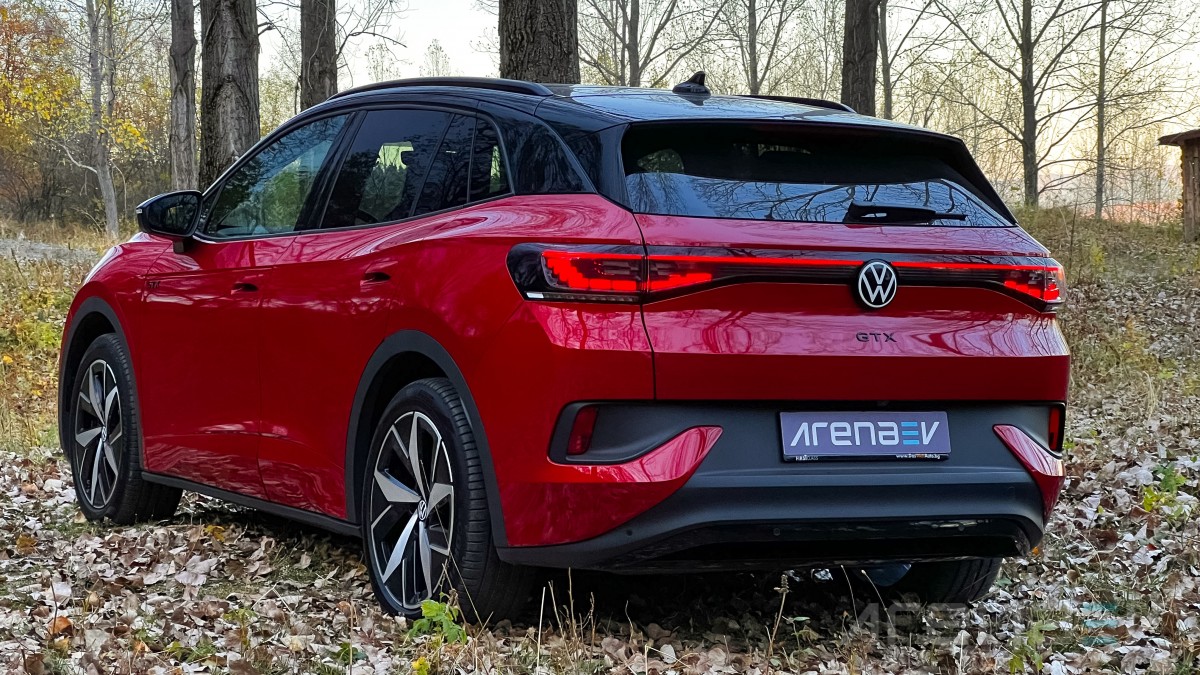
Interior
Inside the ID.4 GTX is a roomy cabin with solid build quality. The general layout is easy to understand, without too many futuristic touches and overcomplicated elements. The materials used could’ve been better, yet they are put together excellently and nothing rattles or squeaks, with the exception of the center screen.
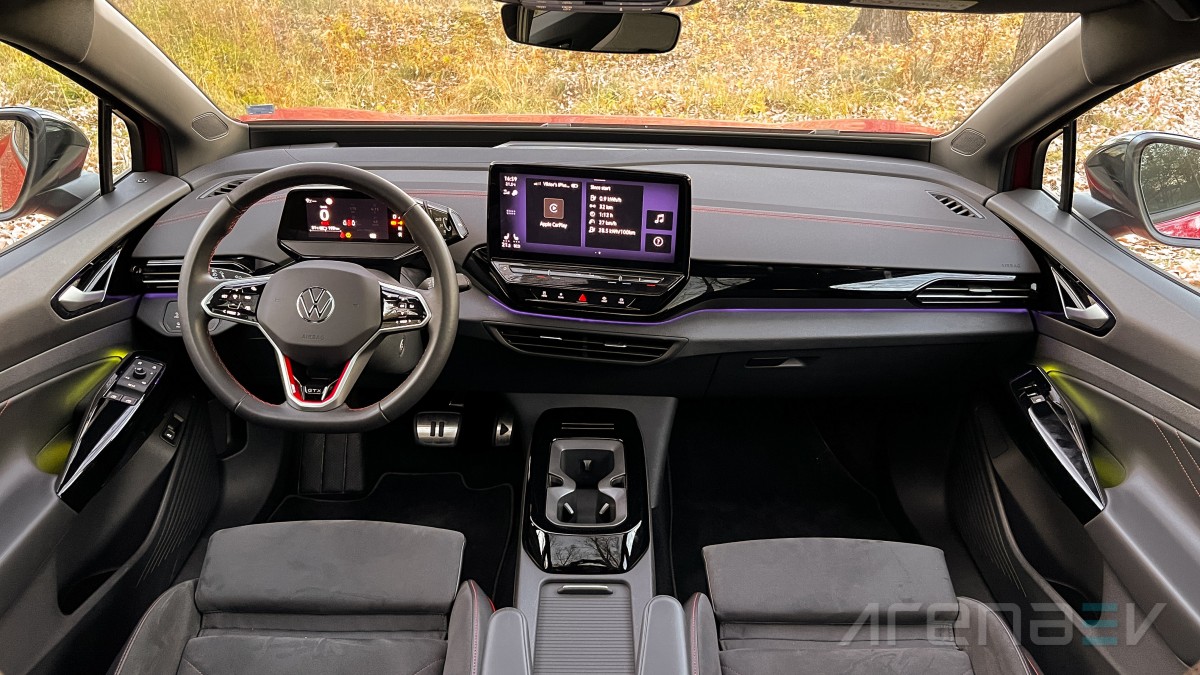
The pedals are the thing you immediately notice when you open the door of the ID.4 GTX. They are chromed with rubber inlets and the brake pedal has a pause icon, while the accelerator has the play/go symbol. These definately brought a smile to our faces.
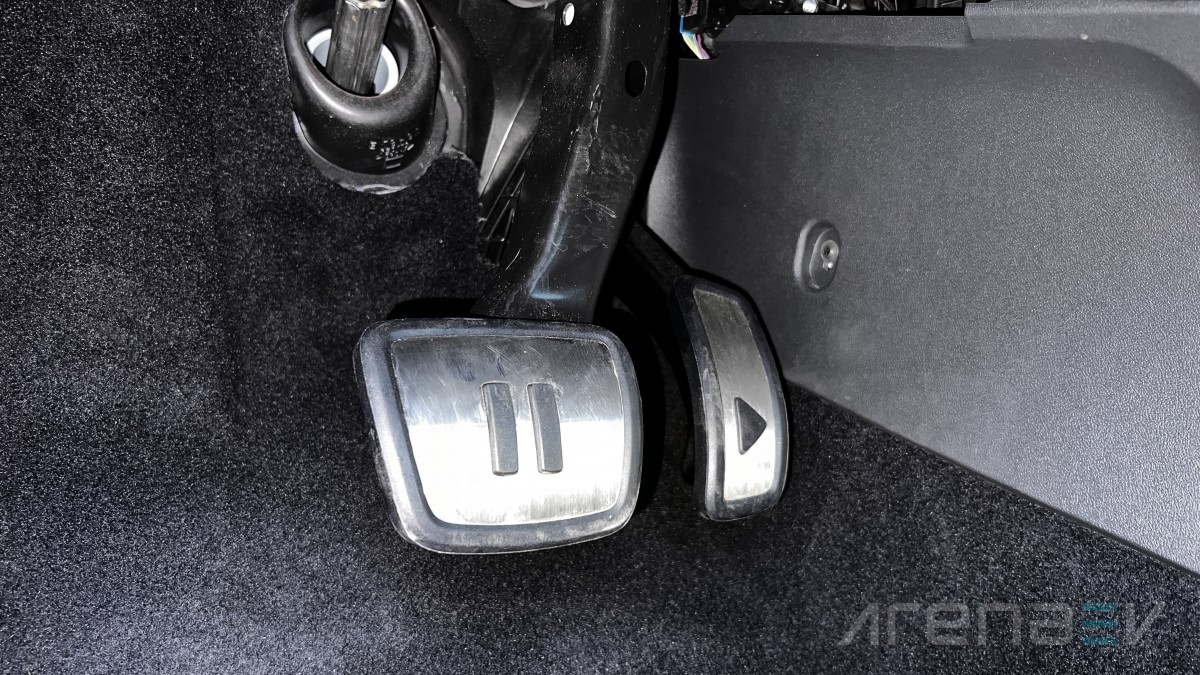
Next up are the seats, they look fabulous and are awesome to sit in. They hug your body well with their big bolsters, while the alcantara prevents you from sliding around. They are not only sporty, but they also provide great comfort and don’t tire you on longer road trips. Optionally, you also can get seat heating and even seat massage, which enhance travel comfort even further. The GTX seats are a huge upgrade and they make the experience behind the wheel that much more enjoyable.
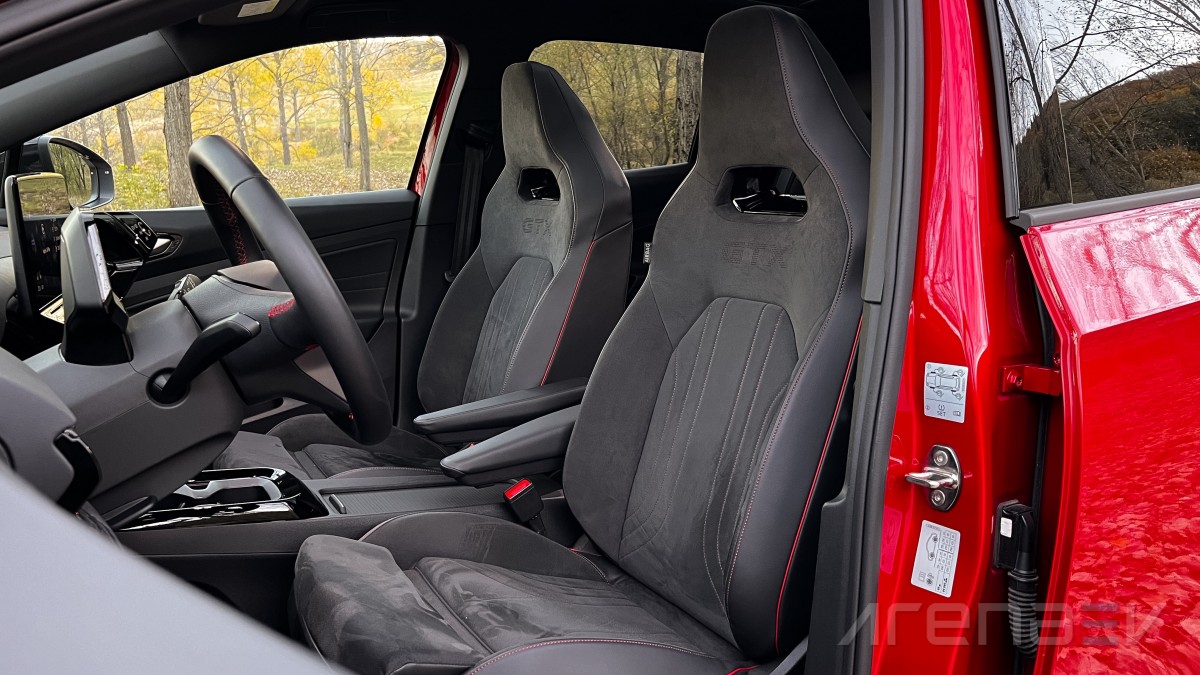
The steering wheel features some great and not-so-great touches. It is nice and small, with a solid feel and optional heating function. It can also control the multimedia and the driver assistance, yet Volkswagen went with one of the worst ways possible to go about those controls. The buttons have a haptic feedback and are not actually buttons, which is a recurring theme in the ID.4. This means they are next to impossible to use while driving, turning what should be a very simple process into a burdening chore.
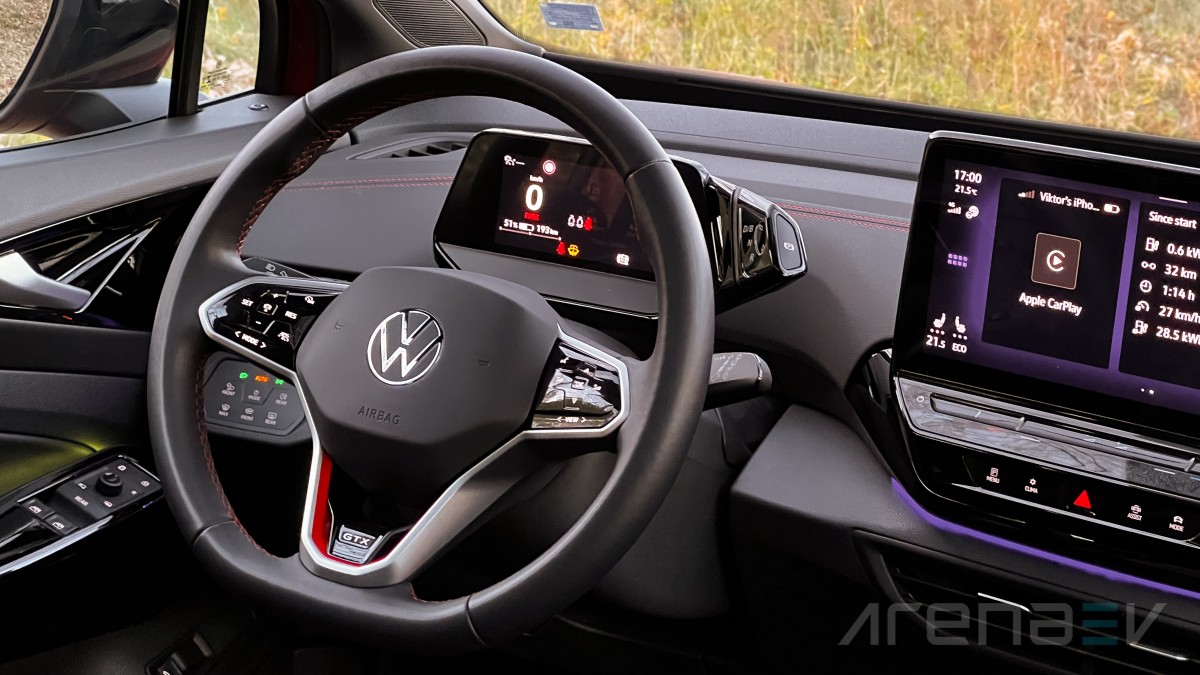
Behind the steering wheel is the tiny gauge cluster display, which shows only the most necessary information, without any cool options and no fancy graphics like many other manufacturers currently do. It shows information about assisted driving, the navigation and a speedometer and that is about it.
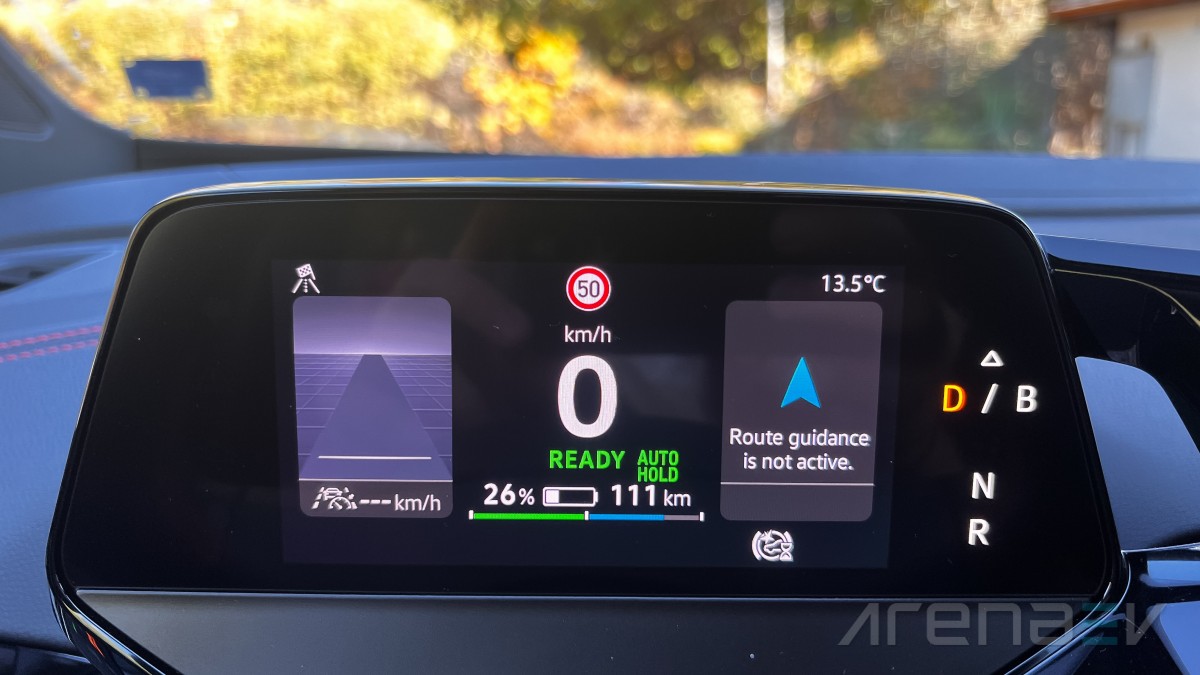
While the gauge cluster is highly basic, the optional head-up display unit is anything but. It projects a huge image on the windshield, providing you with all kinds of information. It can add augmented reality to your navigation so that you never miss your turn, as well as showing you the lane you are driving on, including the trajectory of the corner in front of you. It is truly a phenomenal HUD implementation and an important box to tick when you spec your ID.4 GTX.
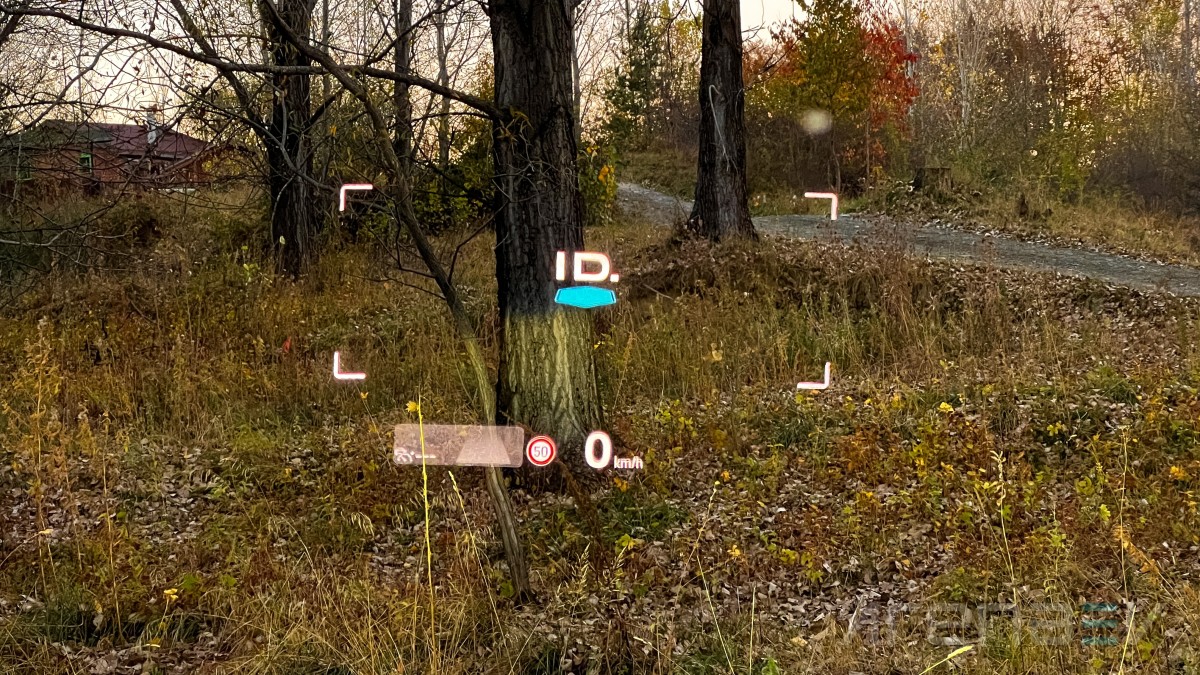
Moving on to the center display, which comes in 10-inch version for the lower trims, and 12 inches in the GTX variant we got. The touchscreen response times are behind the times, which is also the reason why Volkswagen is updating the whole infotainment system for the facelift version, since just about everyone that tried the current one hated it. We are very eager to test the revamped version and will get back to you once we get the chance!
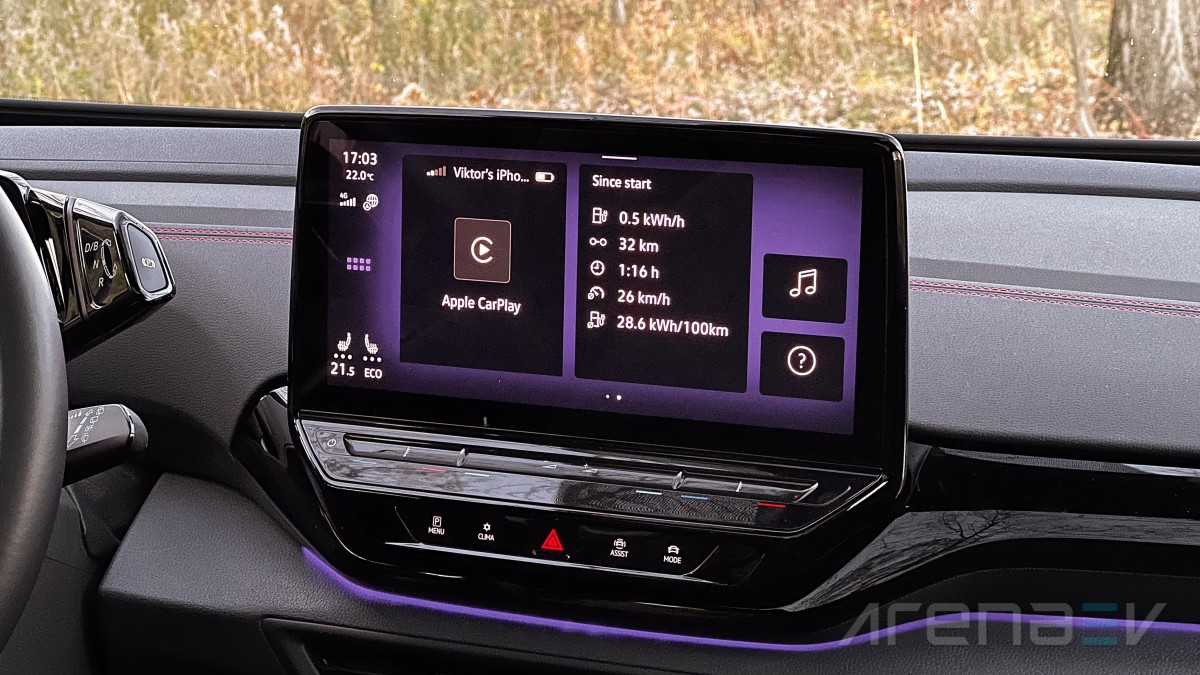
Below the infotainment screen is probably the most offensive part of the whole car, which sadly won’t be addressed in the facelift. We are talking about the unlit slider that controls multiple features. You slide your finger on the piano black surface to adjust the temperature inside, or control the volume of the radio, which is a poor way to operate these in the first place as it's too distracting, not to mention harder and slower than a traditional dial.
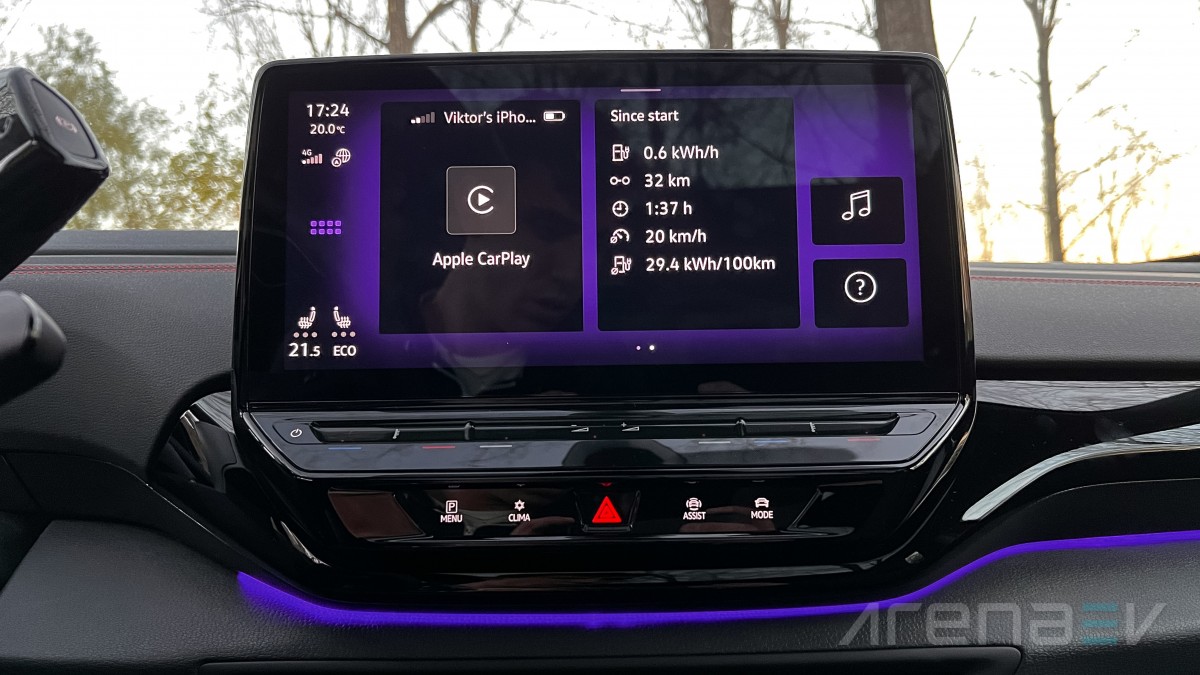
But the most significant problem is that this bar remains unlit at night, which makes it virtually unusable, especially if you don’t know the car too well. It is cool that the car has ambient lighting, which can even show two different colors at once, but we would certainly trade a little bit of ambient lighting for backlit volume and temperature controls.
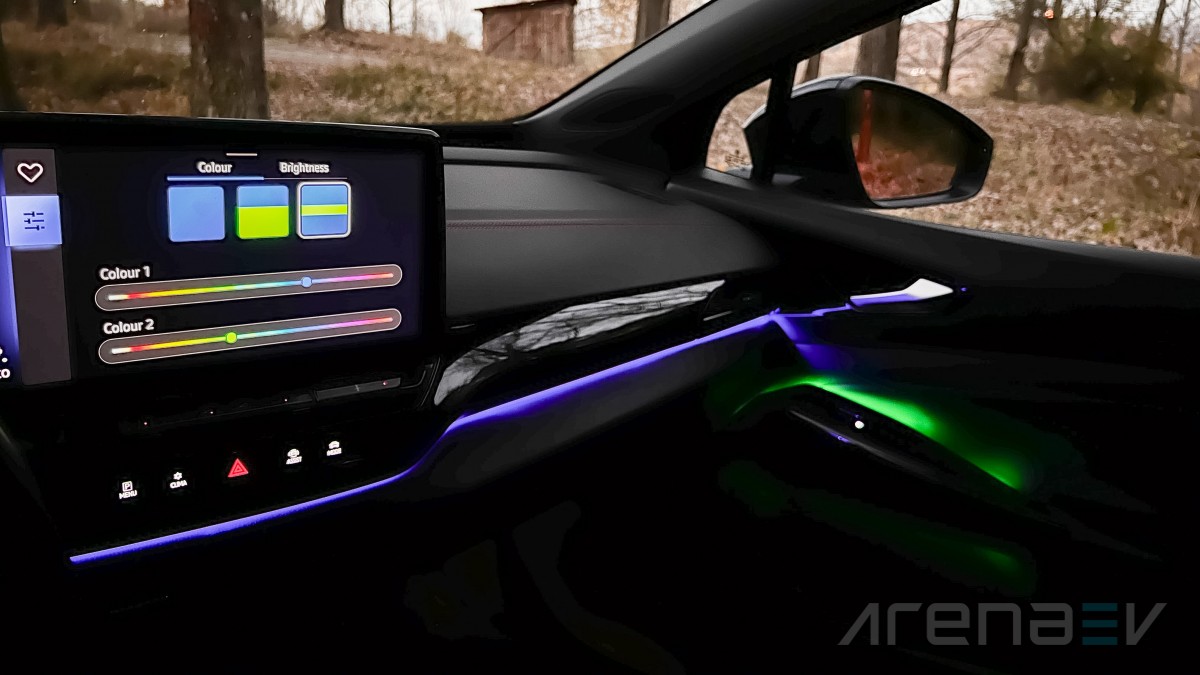
The center console, on the other hand, is more fitting for Volkswagen famed usability and user-friendly design. There are two giant cup holders with two card slots that are constantly open, while a plastic lid hides two more adjustable cup holders, two USB-C ports and a wireless charging tray.
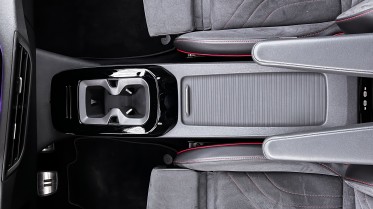
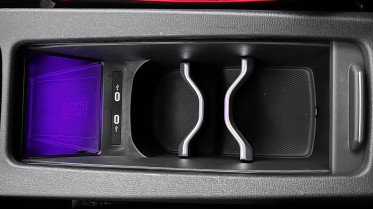
The center console offers a lot of practical features.
Weirdly enough, the ID.4 doesn’t have a traditional armrest. It rather adapts a feature from minivans, with individual thin armrests for each passenger. They look bad and degrade the premium feeling inside the ID.4 and are probably there just for cost-cutting measures, which is a shame.

The doors are fairly simple with the materials in front are significantly better than the ones in back. The driver’s door has controls for the mirrors and rear windows as in most vehicles, yet here Volkswagen again made the mistake of overcomplicating a process that should be simple. The same knob controls the movement, folding and defrosting, which ultimately leads to you never knowing which feature you are currently operating. You also only get two window rockers, which means you have to use a separate rubbery button with no feedback to select that you want to control the rear ones and only then can you operate them.
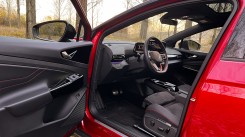
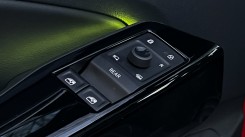
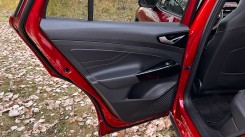
The control switches on the doors are among the most unintuitive ones on the market.
Between the steering wheel and the door panel is a headlight and window defrost unit. The idea of incorporating these features together in that place is ridiculous, but even more so is the use of more rubbery buttons with no feedback.
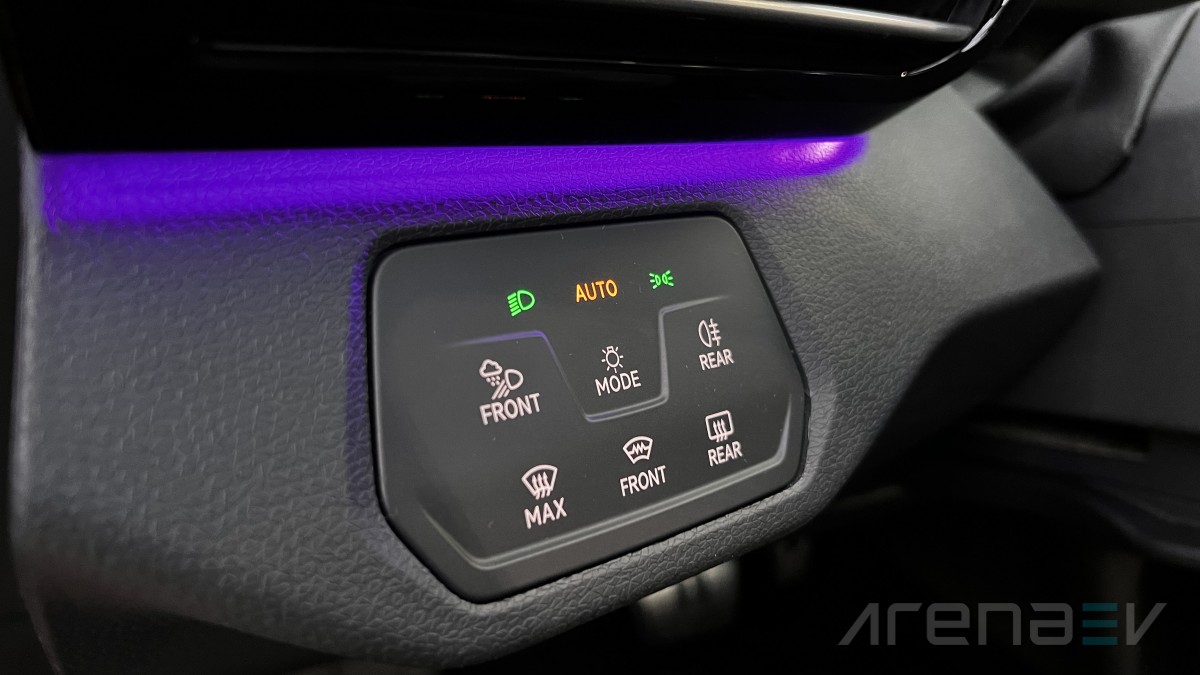
At the back we find plenty of headroom and legroom. Even our 1.95 m (6’4”) tall reviewer fits well with generous amounts of space left. If you plan on riding with many people for longer trips or have child seats, the ID.4 might be among the best choices you can make.
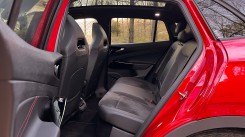
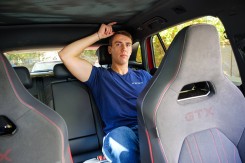
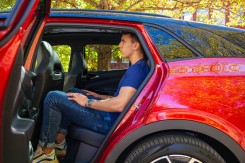
Riding in the back of the ID.4 is a true pleasure!
You also get very nice optional features like USB-C outlets and climate controls with multiple vents for optimized comfort in the back. These are extras not so many vehicles in the segment offer and make the ID.4 GTX stand out.
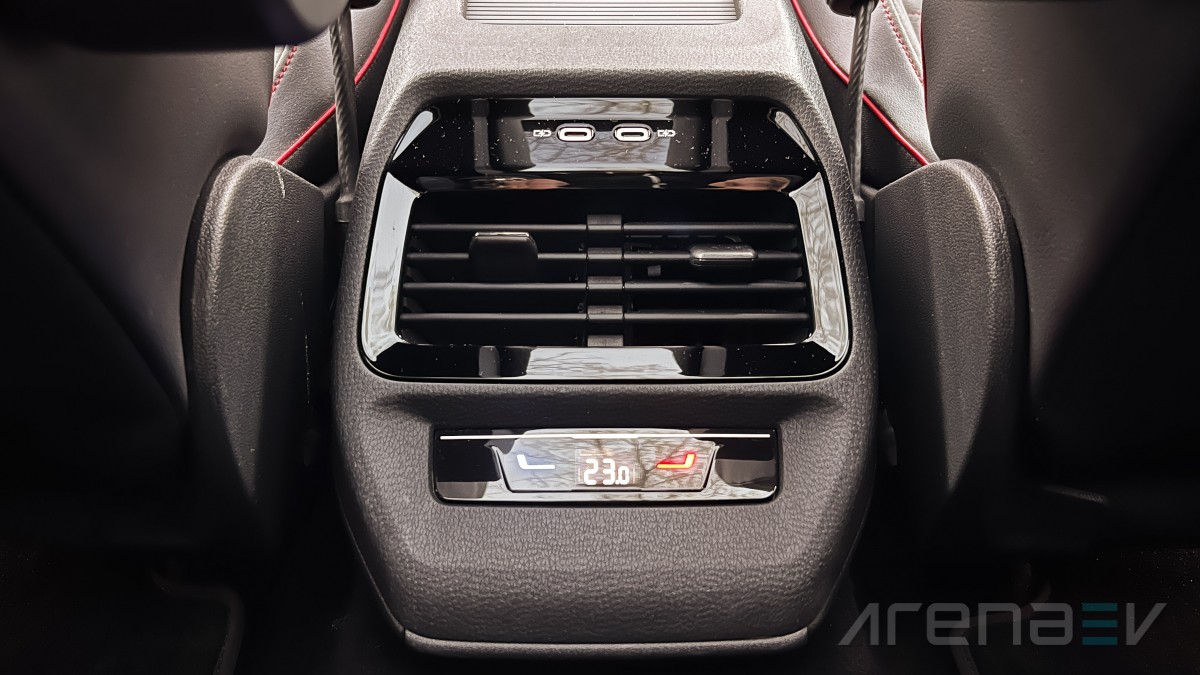
Storage & practicalities
Storagewise, the ID.4 GTX has a lot to offer. It has a boxy trunk, allowing you to fully utilize its cargo potential, as well as two big storage areas below the main trunk floor.
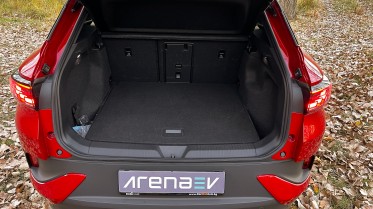
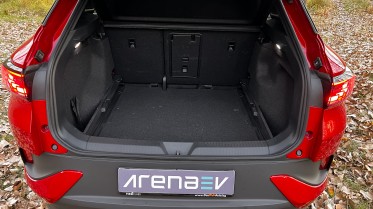
The main storage area is deep and due to the boxy design very practical.
The rear seats fold fully flat cargo floor, opening a huge storage area with a lot of usable space.
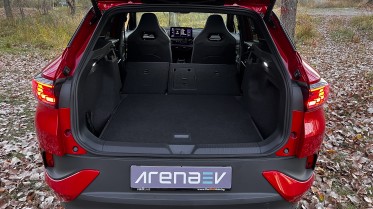
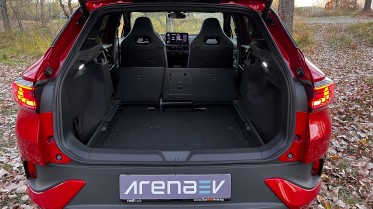
With the seats folded, you reveal much more cargo space.
There is also a 12V outlet and optional towing hitch. Overall, the ID.4 proves very practical and even though it doesn’t have a front trunk it still offers a lot of storage space with clever pockets both inside the cabin and in the trunk.
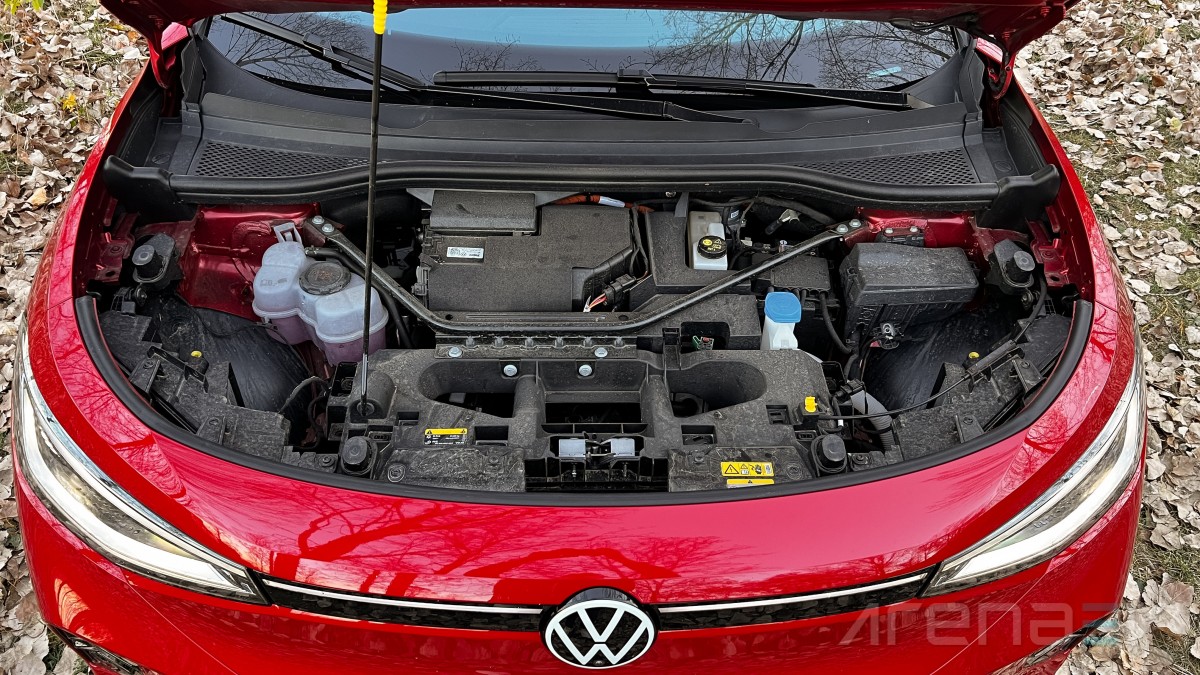
Driving experience
The feeling of driving the ID.4 GTX is rewarding and fun, especially for a crossover. Due to its significant weight of 4,974 lb unladen, it stays planted at speeds and exudes confidence in corners. The steering wheel is small and fits well in your hands.
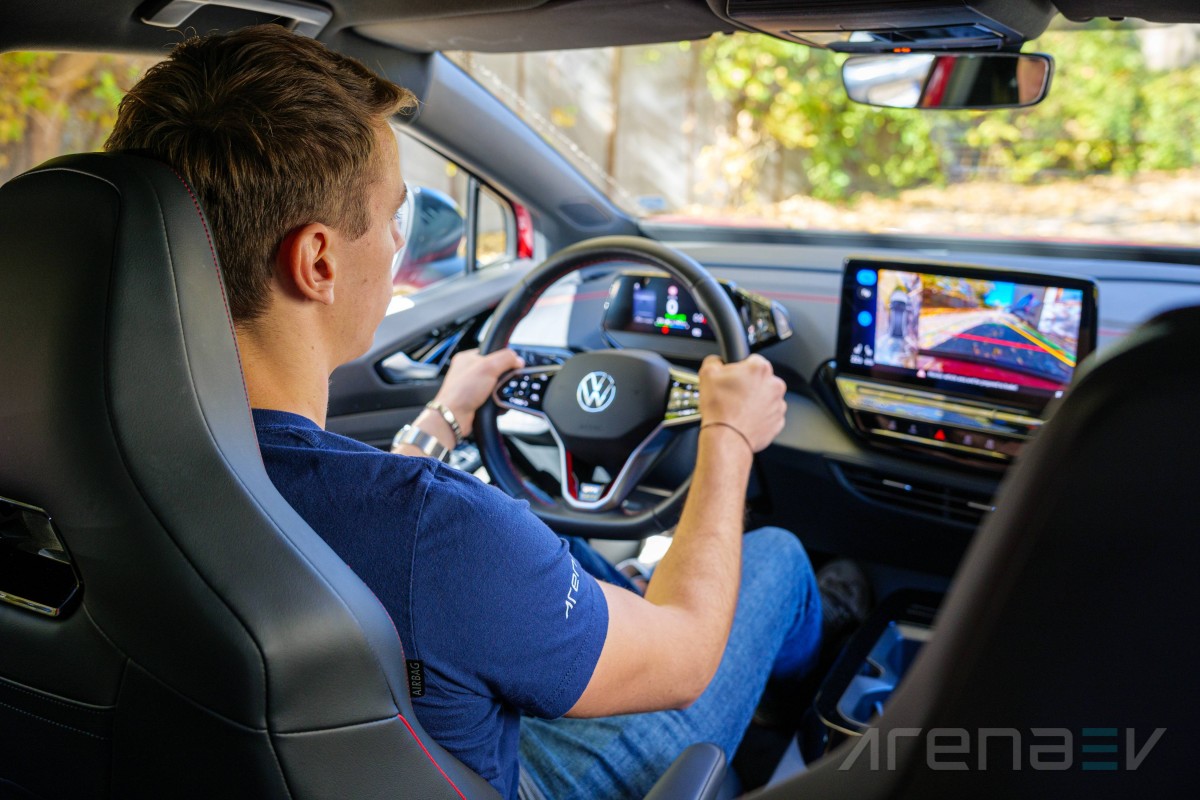
The GTX features stiffer suspension than the regular ID.4 models. Optionally, you can get adjustable suspension for the different driving modes, but we got the fixed sports suspension, which was definitely felt negatively daily driving, but was great fun on twisty roads and very stable on the highway.
This also meant there are no significant changes between the modes, except for pedal response and power delivery. Vokswagen claims it offers one-pedal driving, but it isn’t completely true as the ID.4 GTX won’t come to a full stop on its own and requires you to press the brake pedal for that.
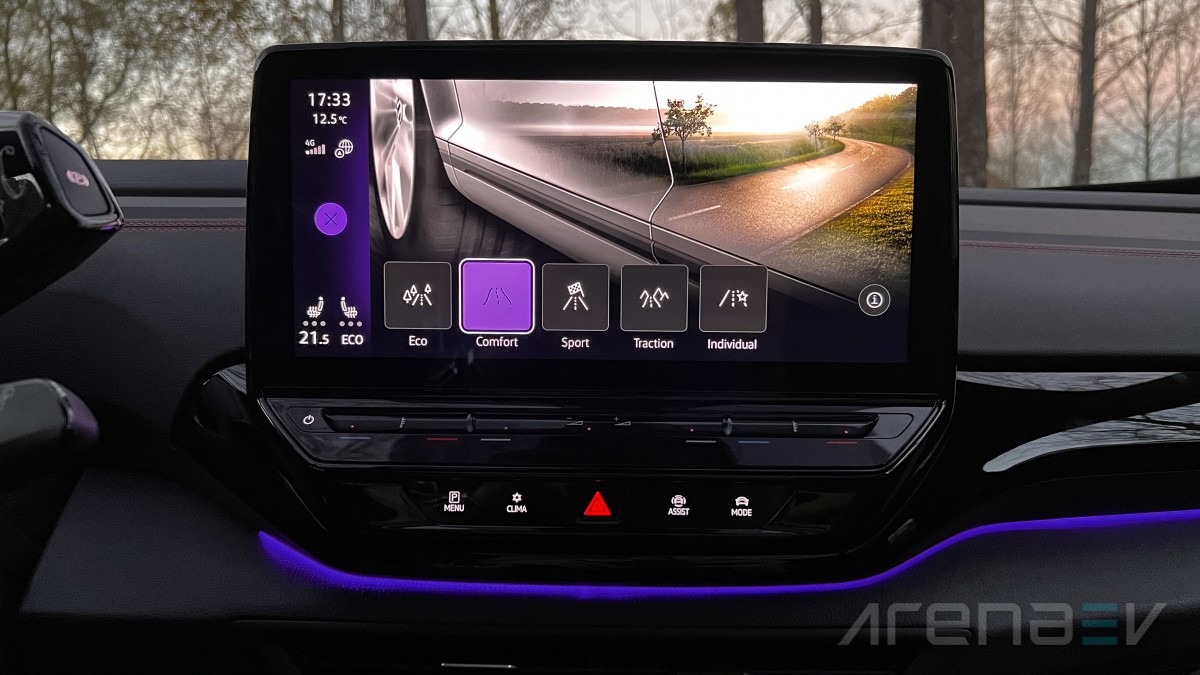
You don’t get much feedback from the road, yet you see very well in front of you and the augmented reality head-up display we mentioned previously helps you predict precisely how you should take the next corner. The ID.4 GTX isn’t quite as agile as the RWD versions and needs a little bit more space for tight maneuvers.
The ID.4 also comfortably goes on light off-roading, its approach and departure angles are great and its wheelbase makes it a good companion for some dirt adventures.
Tech features
The ID.4 wasn’t a technological leader in 2020 when it first debuted and the situation remains the same three years later. It doesn’t have some groundbreaking features like Tesla’s autopilot for example, but the ID.4 feels more traditional and refined. It has proven technologies that have worked in previous models and are now only being refined and optimized.

The most significant downside is the infotainment, which is unnecessarily complicated and not very responsive either. It has serious input lag, as well as some menus that don’t always work. The fact that Volkswagen was forced to rush out a facelift with the sole intent of addressing complaints about the infotainment tells you just about everything you need to know about this version.
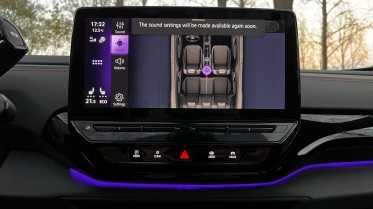

Some menus spontaneusly decide not to work, while the settings menus are too overcomplicated.
But despite its faults the central screen has a lot of features, provides connected services and shows all kinds of vehicle data. Sadly, the climate controls are also integrated in the screen and require multiple touches to operate.
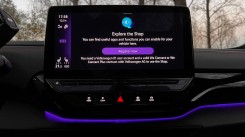
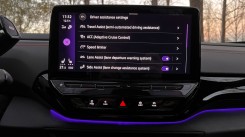

Despite the negatives, the infotainment display offers a vast array of capabilities.
On a much more positive side, Volkswagen has integrated a great head-up display unit with big readouts, augmented reality and multiple customization options. It makes up greatly for the small gauge cluster with limited usage and outdated design.

Volkswagen released an update in mid-2022 that included Auto hold feature and bidirectional charging. The latter one is very interesting, as you’ll be able to use it for only 4000 hours and up to 10,000 kWh for the entire life of the vehicle, which is a really bizarre limitation and may affect the future prices of used vehicles, especially the ones that have used up the majority of their running time hours.

Ride comfort
As we mentioned previously, our test model came with standart sports suspension that is stiffer than the adaptive one. It still filters small uneven surfaces and blocks out most of the jiggles when driving on pavement.
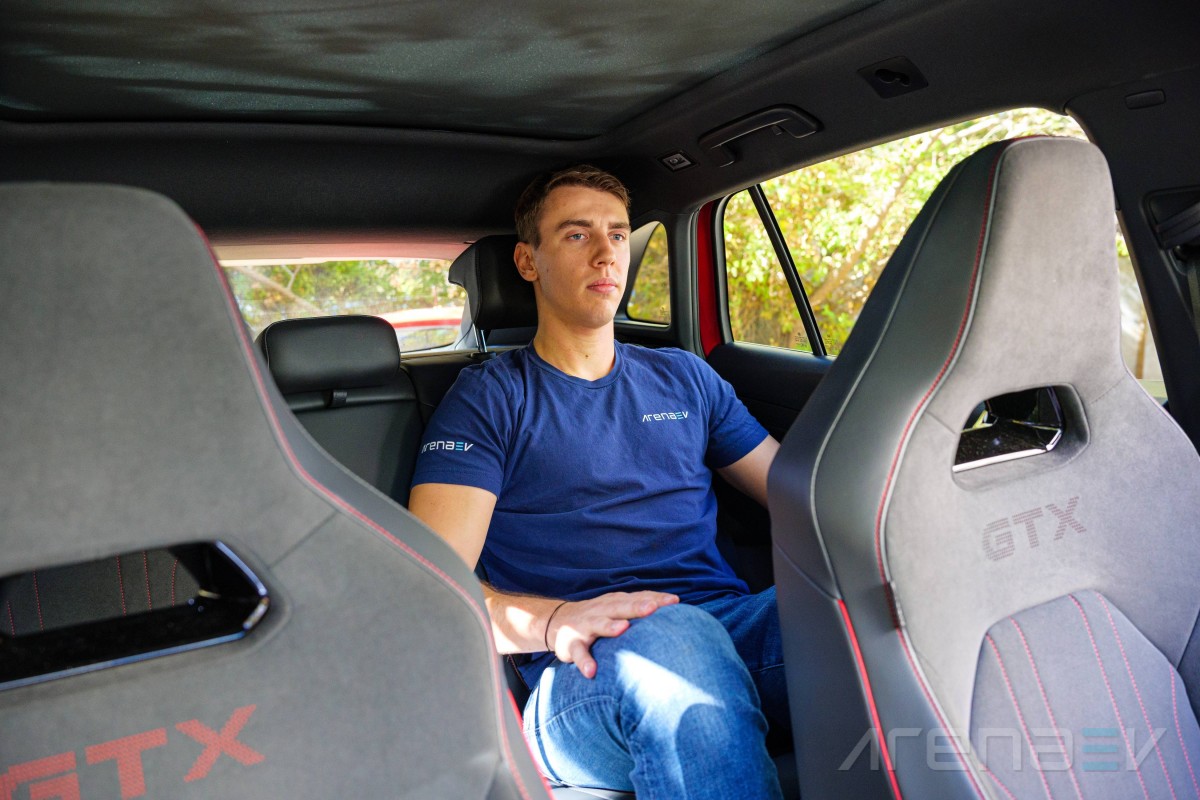
It is not too harsh to be unusable for daily use, while also allowing you to enjoy a fun ride on some mountain roads.
Cabin noise
The cabin of the ID.4 is very well insulated and at low speeds is truly a calm place. The fact it does than some much more expensive and premium models in our tests speaks a lot about the attention to detail in the ID.4.
Sound level tests are carried out with a specialized sound level meter placed in the car's cupholders. The test is conducted with air conditioning and radio off and while maintaining a steady speed.
Acceleration and braking
Accelerating in the GTX is not as thrilling as the name might suggests but still pretty solid by any standard. With a time for 0-62 mph of 5.57s the ID.4 is not a drag strip monster, but does fairly well for such a heavy vehicle. Strangely, what is meant to be the sportiest version of the lineup still has its top speed limited to just 112 mph.
Stopping the ID.4 GTX from 62 mph takes37 m (122 ft), which is an average figure for the test. The commendable part is that the ID.4 GTX is consistent with its results and did the same length in 4 consecutive stops. This means that the brakes are reliable and you can count on them in all cases.
Consumption
Even though the ID.4 GTX has smooth body lines for optimized air flow, it shows signs of aging and some newer models are much better in terms of efficiency. The WLTP rating of 320 miles of range is manageable with very careful driving. Our testing was conducted in near perfect conditions as the ambient temperature was 63°F.
We measure consumption by driving at constant speeds on an identical test route during the day. Testing is conducted with air conditioning, all safety systems and radio on. The data comes from the vehicle's board computer. Specific testing parameters such as ambient temperature are mentioned in the text on a case by case basis.
Charging speed
Volkswagen officially claims the ID.4 GTX can charge at up to 175 kW. During our testing we did everything as recommended and preheated the battery, drove the car for a while and still couldn’t quite reach that value, peaking at 156 kW.
More disappointingly, once we reached 39% of charge, the charging rate dropped significantly and the car could only charge at 76 kW, which makes the process of charging much slower than it could have been. In some ideal situations you should be able to reach the optimal values as shown in the Fastned graph below, but don't count on that being the norm.
See this Real-world charging time tool on our website.
Competition
The Volkswagen ID.4 GTX enters a tightly contested segmen that continues welcoming new competitors every week these days. The VW is priced somewhere in the middle of it when it comes to pricing and just about every important performance aspect. It never topped any charts nor did it flop dramatically anywhere. One could say this has been Volkswagen’s formula for success for many years and it's no wonder the company stuck with it.
The first and most significant competitor of the ID.4 GTX is the similarly priced Tesla Model Y LR. It is a bit bigger in size and has more modern technologies, yet the ID.4 is better suited for smaller and densely populated cities with its great cabin. The Volkswagen has better interior materials and build quality, but the Tesla is more efficient, allowing you better range from a smaller battery.
The second rival comes from Volkswagen’s own stable and is actually the same vehicle rebranded as the Skoda Enyaq RS. Both vehicles share their powertrain and sit atop the same platform. The Skoda has a simpler interior, more storage space and a better infotainment system. And even though Skoda lacks the brand image of Volkswagen the Enyaq actually costs more.
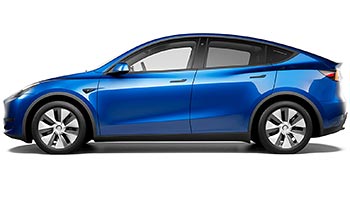
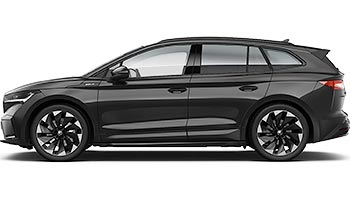
Tesla Model Y LR AWD 82kWh 2021 - • Skoda Enyaq RS 2023 -
Verdict
The Volkswagen ID.4 GTX is a great all-around vehicle, giving its owner just enough of everything. It is a highly practical vehicle, which is also great fun to drive. It has enough power to zoom through traffic, without being a track car. It is a vehicle that accompanies you in your daily routines and offers perfect usability in all kinds of situations.

The ID.4 is primarily held back by its infotainment system and unneccessary complicated controls, most of which will be addressed in the upcoming facelift. If you are willing to live with those, the ID.4 GTX will make a fine companion that will make the boring daily activities that little bit more pleasant.
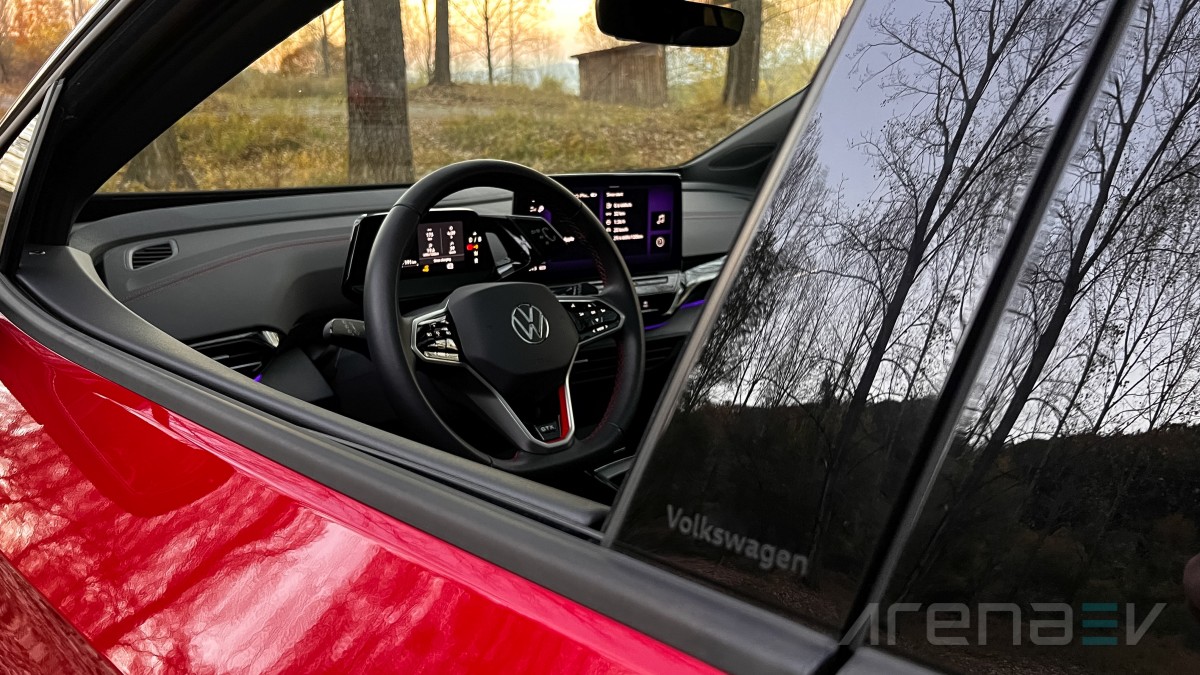
Pros
- Stable and fun to drive.
- Sporty, but comfortable seats.
- Plenty of interior space.
- Big trunk with foldable seats and many additional pockets.
- Distinctive styling with fine proportions.
- Easy and predictable to drive.
Cons
- The infotainment system is laggy and unintuitive.
- Lack of one-pedal driving.
- Key controls lack backlighting and are hard to operate in the dark.
- High weight for the class.
Reader comments
- Anonymous
- xt8
For this money, Tesla Model Y for me any day of the week. If only I could afford a new car...
- Fearghast
- ps1
TBH, unless you do not downright despise Ionic 5 design, I do not see a reason to ever pick ID.4 ... maybe if you would have to choose between bZ4X and ID.4 ... in that case, that would be a really rough decision to make.
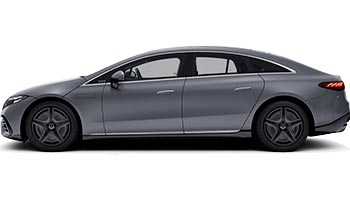

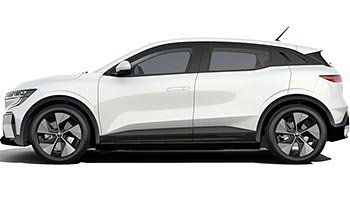
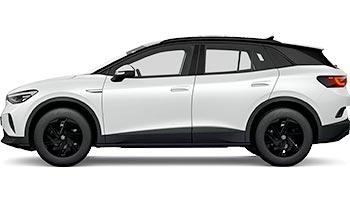
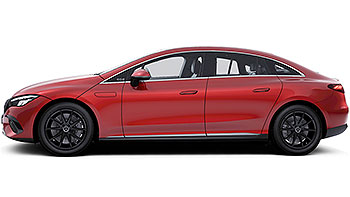
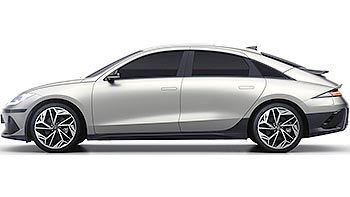
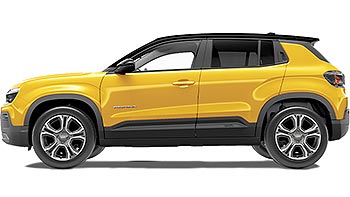
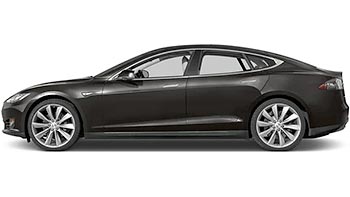
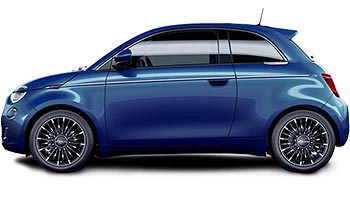
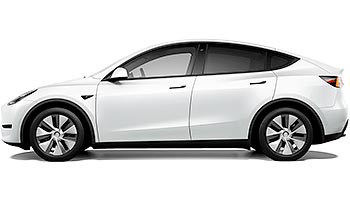
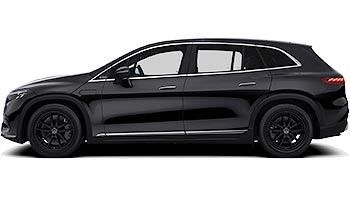
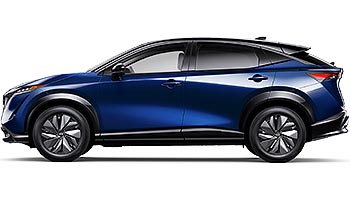




Facebook
Twitter
Instagram
RSS
Settings
Log in I forgot my password Sign up